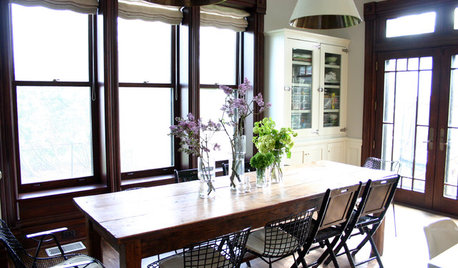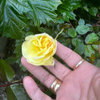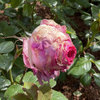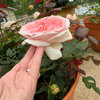recent Consulting Rosarian rose prunning article
henry_kuska
14 years ago
Related Stories

WINTER GARDENINGPruning Secrets for Exquisite Roses
Encourage gorgeous blooms year after year with this time-tested advice on how to prune your rosebush in winter for health and shape
Full Story
GARDENING GUIDESWhat Kind of Roses Should You Grow?
Want to add the beauty of roses to your garden? Find out which ones, from old-fashioned to modern, are right for you
Full Story
GARDENING GUIDES6 Wonderfully Easy Roses for Any Gardener
Look like an expert even if you're just starting out, with these low-maintenance gems of the rose world
Full Story
MOST POPULARFirst Things First: How to Prioritize Home Projects
What to do when you’re contemplating home improvements after a move and you don't know where to begin
Full Story
LANDSCAPE DESIGNThe Unparalleled Power of Trees
Discover the beauty and magic of trees, and why a landscape without them just isn't the same
Full Story
TASTEMAKERSWorld of Design: Where Color Trends Begin
Colors go in and out of vogue. Here’s how they make their way into our home decor
Full Story
UPHOLSTERYSlipcover Magic: Casual, Washable and Fresh for the Season
Reinvent your sofas, chairs and ottomans with surprisingly chic and versatile slipcovers
Full Story
COLOR PALETTESSet the Mood: 4 Colors for a Romantic Bedroom
Bring your love of color — and the colors of love — into your master bedroom
Full Story
HOUZZ TOURSMy Houzz: Hard Work Pays Off in a DIY Cottage Renovation
First-time homeowners roll up their sleeves and give their midcentury Montreal home an infusion of style and personality
Full Story
HOUZZ TOURSMy Houzz: Modern and Airy Style on a Budget
Patience, creativity and help from family turn a baker’s cookie-cutter condo into a bright and cheerful home
Full Story






susan4952
ingrid_vc so. CA zone 9
Related Discussions
Huntington member article on the decline of the rose hobby
Q
Buckeye District Bulletin - Rose Rosette article
Q
Rose Consultant
Q
Is this Rose Rosette Virus?
Q
susan4952
ingrid_vc so. CA zone 9
karl_bapst_rosenut
buford
henry_kuskaOriginal Author
buford
michaelg
olga_6b
henry_kuskaOriginal Author
olga_6b
jim1961 / Central Pennsylvania / Zone 6
olga_6b
the_morden_man
olga_6b
Jeannie Cochell
the_morden_man
henry_kuskaOriginal Author
henry_kuskaOriginal Author
buford
olga_6b
henry_kuskaOriginal Author
susan4952
jim1961 / Central Pennsylvania / Zone 6